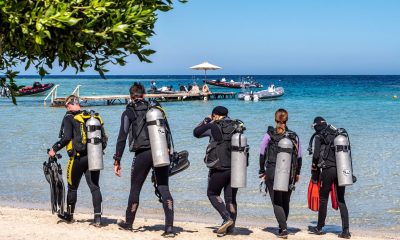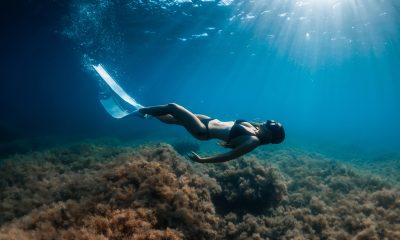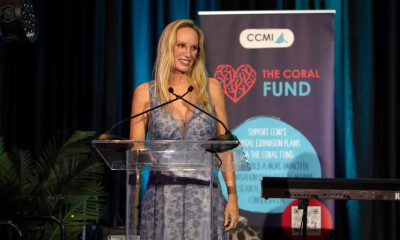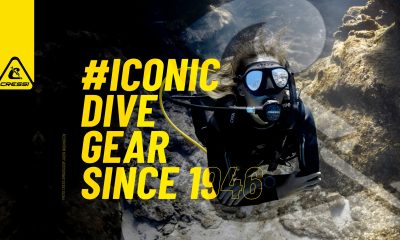News
Free Diving: Alice Hickson’s record breaking 57m dive
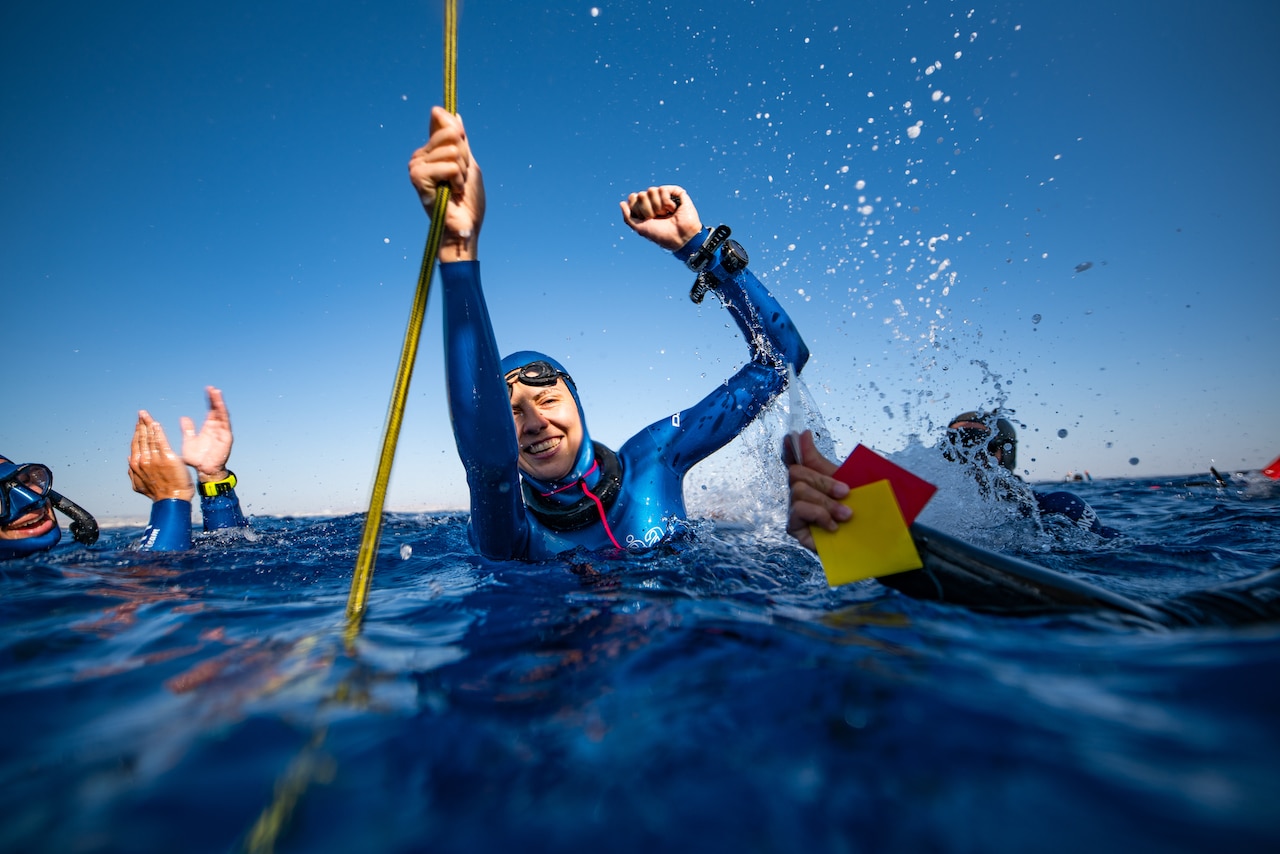
We missed out on reporting this when it happened but didn’t want it to go unnoticed so…. huge congratulations to Alice Hickson on her new British Record of 57m with no fins! Full story below…
Alice Hickson set a new freediving depth UK national record in Larnaca, Cyprus at the 5th edition of the Infinity Depth Games, on 13th October. Using only her arms and legs for propulsion, Alice swam down a measured rope to 57m, collected a tag from the bottom plate (at the end of the rope) and returned to the surface to receive a white card validating her dive from the AIDA International Judges – holding her breath for a total of two minutes and thirty-six seconds. The previous record (set twelve years ago by Sara Campbell at 56m in October 2007) has not been improved upon until now by the naturally talented Hickson.
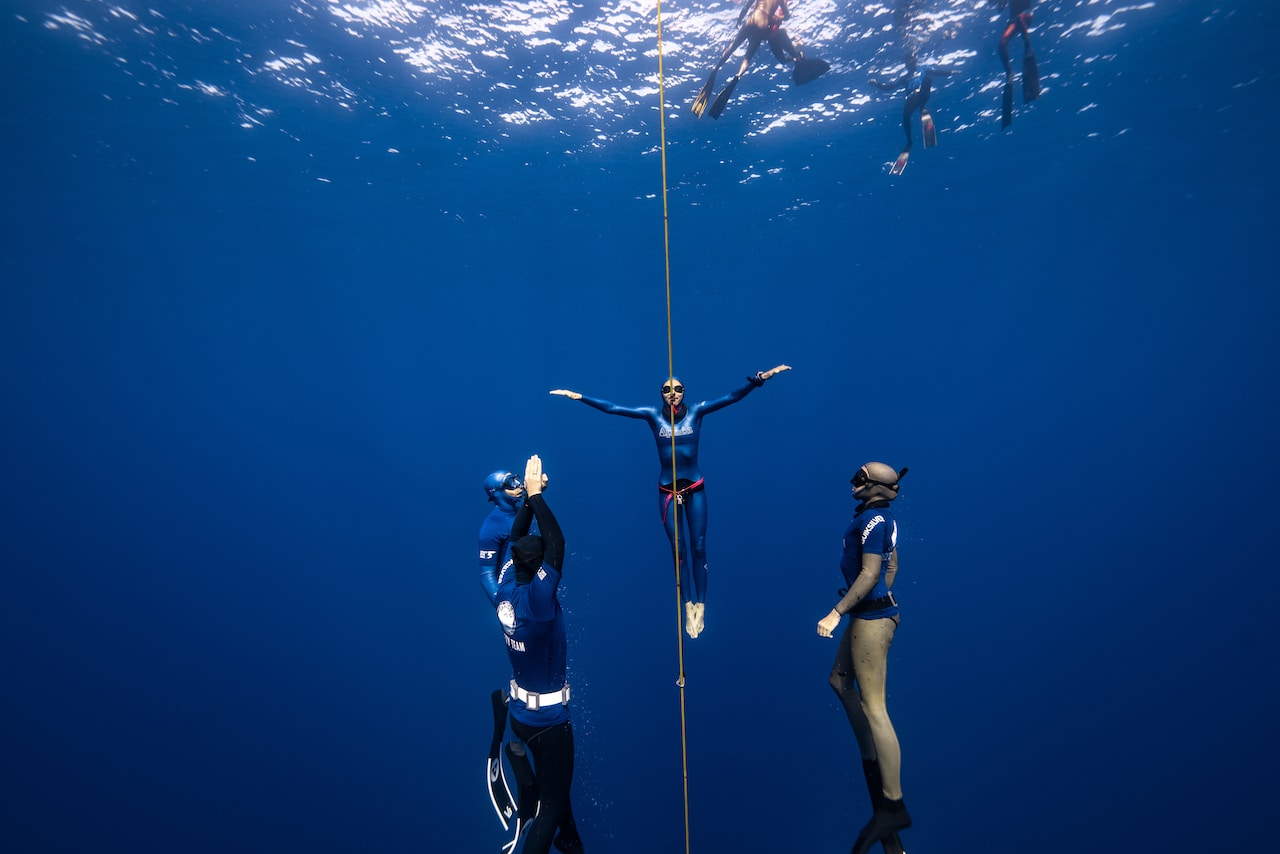
Image: Daan Verhoeven
Hickson is a thirty-year old Mental Health Practitioner, originally from Doncaster and based in Bristol. In her spare time, as well as trying to fit in her freedive training, Alice teaches children with special needs how to swim. Alice holds all of the records in the pool freediving disciplines, and having set her sights on depth just this year, has already won the 2019 UK female national depth championships, organised by Saltfree Divers in Chepstow.
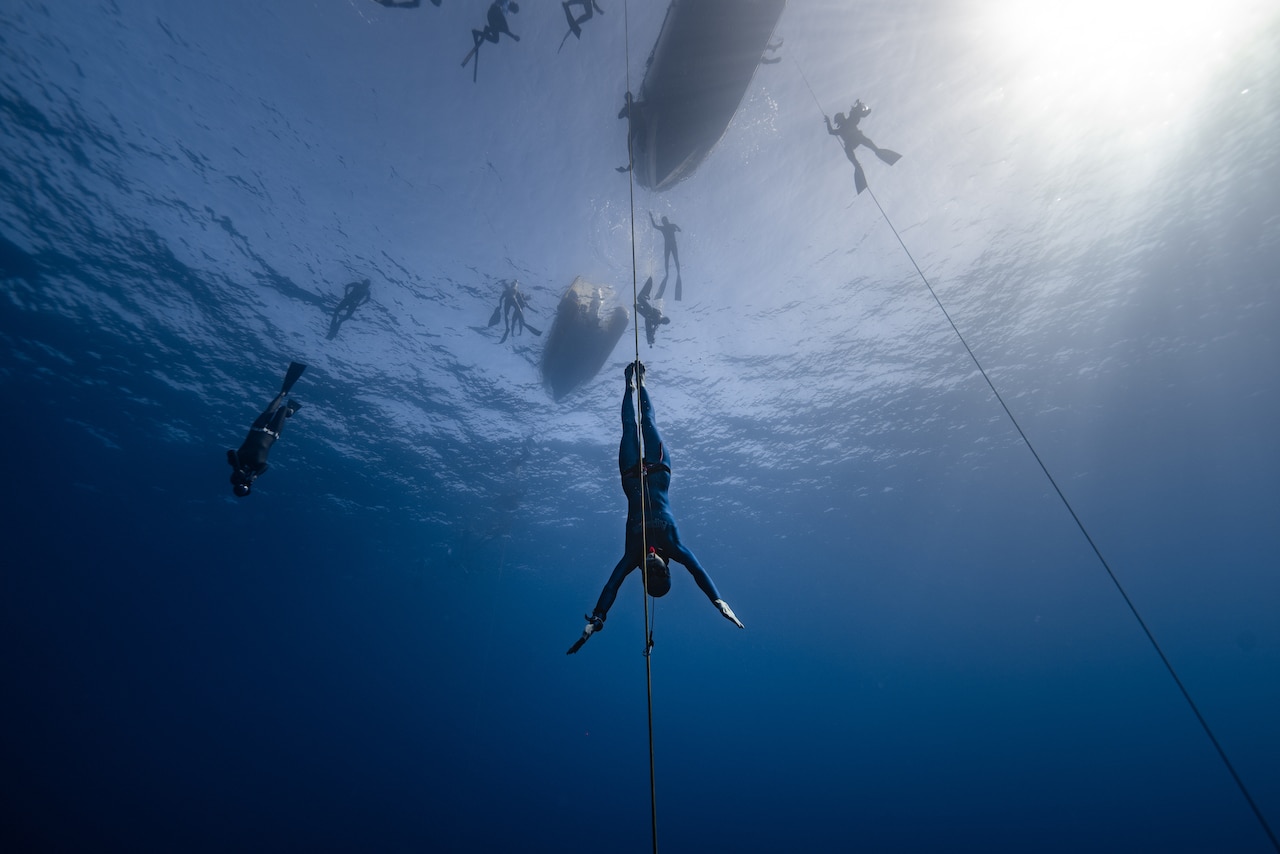
Image: Daan Verhoeven
This is what the new national record holder had to say about her constant weight no fins dive (CNF):
“This is my first time at the Infinity Depth Games (IDG) organised by Pavlos Kourtellas, Costas Costantinou and Nicole Karsera, and first time training in warm water! I got here a week ago and each day has been amazing. The set-up is fantastic and the IDG team and volunteers go above and beyond to make everyone feel comfortable, calm and welcome. There’s a great atmosphere between all the other athletes too.
The past week I’ve focused on CNF as I’ve not had chance to do this in the cold quarry back home and it’s probably my favourite discipline. I love the freedom of no fins (and it’s one less thing to carry and forget!). The dive felt amazing and it was the icing on the cake to break the long-standing record. The most important thing for me is to enjoy the dive and I loved every second. It’s so much easier to put in a good performance when you know you’re surrounded by beautiful, kind people who want you to do well!
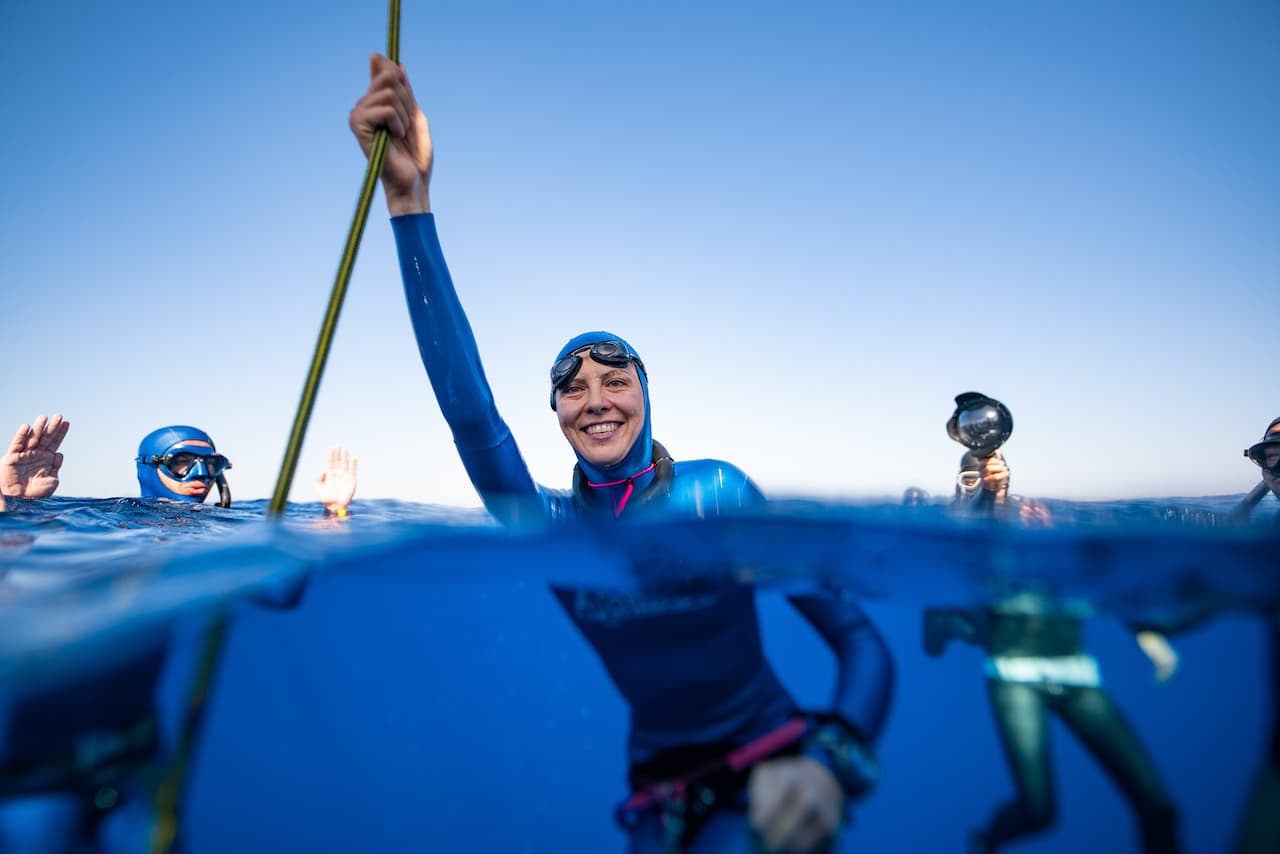
Image: Daan Verhoeven
I would like to thank all of the organisers, safety, AIDA judges, friends and athletes for their support, well wishes and kindness. In particular, Beci Ryan for epic coaching, Georgina Miller for all support, Daan Verhoeven for top tips and encouragement, Francesca for wise words, Liam Abel of 2971 for an amazing kit and Giorgos Sakkas for a great suit and assistance. Looking forward to discovering what else I can do.”
To find out more, please visit: www.britishfreediving.org
News
Dive Worldwide Announces Bite-Back as its Charity of the Year

Over the next 12 months, specialist scuba holiday company Dive Worldwide will be supporting Bite-Back Shark & Marine Conservation with donations collected from client bookings to any one of its stunning dive destinations around the world. The independently-owned operator expects to raise £3000 for the UK charity.
Manager at Dive Worldwide, Phil North, said: “We’re especially excited to work with Bite-Back and support its intelligent, creative and results-driven campaigns to end the UK trade in shark products and prompt a change in attitudes to the ocean’s most maligned inhabitant.”
Bite-Back is running campaigns to hold the media to account on the way it reports shark news along with a brand new nationwide education programme. Last year the charity was credited for spearheading a UK ban on the import and export of shark fins.
Campaign director at Bite-Back, Graham Buckingham, said: “We’re enormously grateful to Dive Worldwide for choosing to support Bite-Back. The company’s commitment to conservation helps set it apart from other tour operators and we’re certain its clients admire and respect that policy. For us, the affiliation is huge and helps us look to the future with confidence we can deliver against key conservation programmes.”
To launch the fundraising initiative, Phil North presented Graham Buckingham with a cheque for £1,000.
Visit Dive Worldwide to discover its diverse range of international scuba adventures and visit Bite-Back to learn more about the charity’s campaigns.
MORE INFORMATION
Call Graham Buckingham on 07810 454 266 or email graham@bite-back.com
Gear News
Scubapro Free Octopus Promotion 2024

Free Octopus with every purchase of a SCUBAPRO regulator system
Just in time for the spring season, divers can save money with the FREE OCTOPUS SPRING PROMOTION! Until July 31st SCUBAPRO offers an Octopus for free
with every purchase of a regulator system!
Get a free S270 OCTOPUS with purchase of these combinations:
MK25 EVO or MK19 EVO with A700
MK25 EVO or MK19 EVO with S620Ti
MK25 EVO or MK19 EVO with D420
MK25 EVO Din mit S620Ti-X
Get a free R105 OCTOPUS with purchase of the following combinations:
MK25 EVO or MK19 EVO with G260
MK25 EVO or MK17 EVO with S600
SCUBAPRO offers a 30-year first owner warranty on all regulators, with a revision period of two years or 100 dives. All SCUBAPRO regulators are of course certified according to the new European test standard EN250-2014.
Available at participating SCUBAPRO dealers. Promotion may not be available in all regions. Find an authorized SCUBAPRO Dealer at scubapro.com.
More information available on www.scubapro.com.
-

 News3 months ago
News3 months agoHone your underwater photography skills with Alphamarine Photography at Red Sea Diving Safari in March
-

 News3 months ago
News3 months agoCapturing Critters in Lembeh Underwater Photography Workshop 2024: Event Roundup
-

 Marine Life & Conservation Blogs3 months ago
Marine Life & Conservation Blogs3 months agoCreature Feature: Swell Sharks
-

 Blogs2 months ago
Blogs2 months agoMurex Resorts: Passport to Paradise!
-

 Blogs2 months ago
Blogs2 months agoDiver Discovering Whale Skeletons Beneath Ice Judged World’s Best Underwater Photograph
-

 Gear Reviews2 weeks ago
Gear Reviews2 weeks agoGEAR REVIEW – Revolutionising Diving Comfort: The Sharkskin T2 Chillproof Suit
-

 Marine Life & Conservation2 months ago
Marine Life & Conservation2 months agoSave the Manatee Club launches brand new webcams at Silver Springs State Park, Florida
-

 Gear Reviews3 months ago
Gear Reviews3 months agoGear Review: Oceanic+ Dive Housing for iPhone







